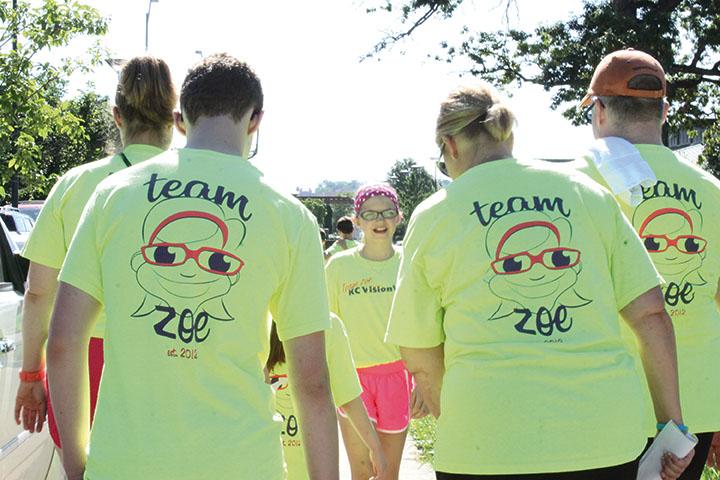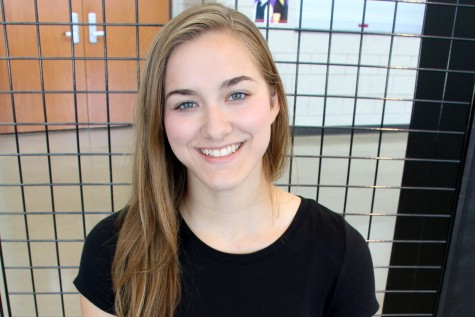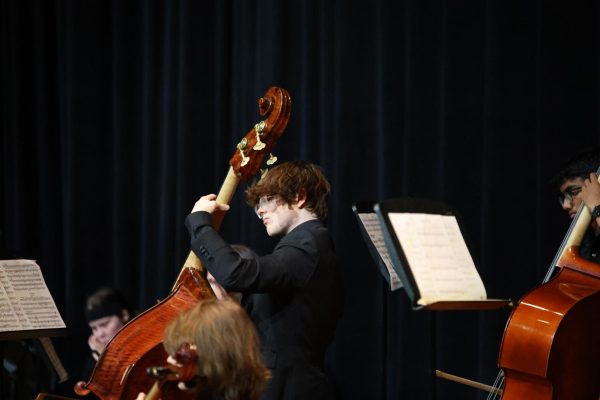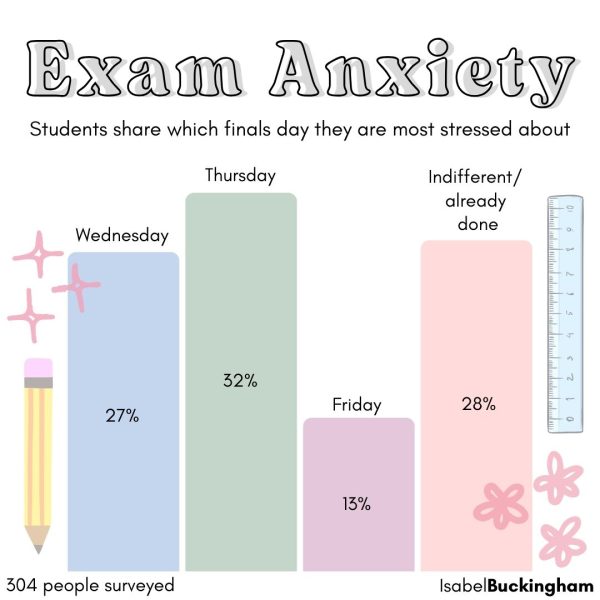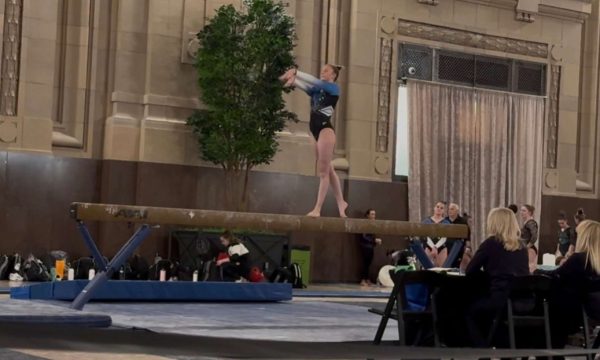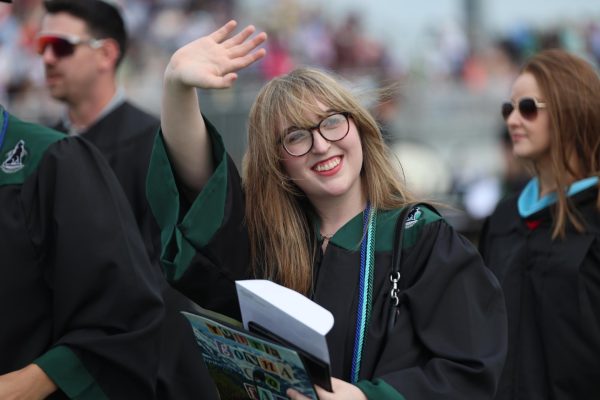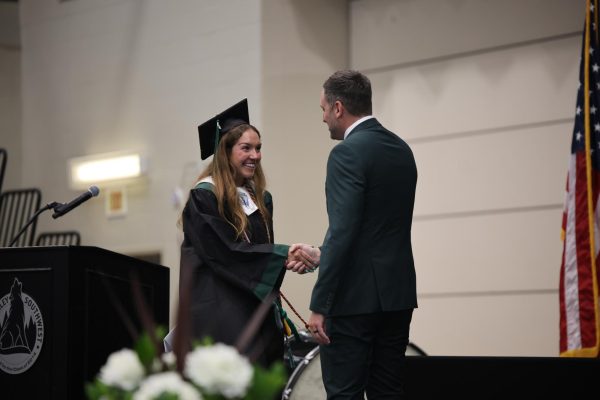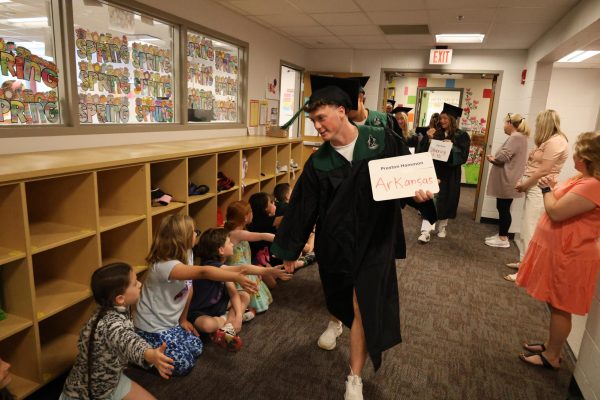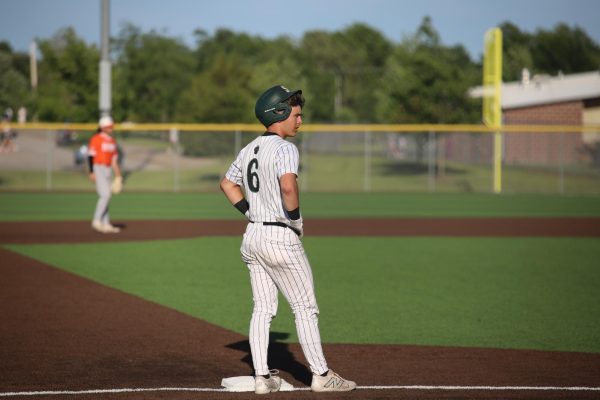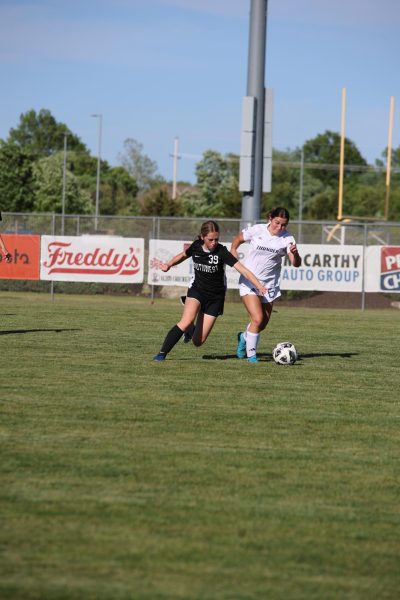Future Southwest student raises awareness for vision loss
Future Southwest student and Morse Elementary fifth-grader Zoe Murrow worked with her mother, Katie Murrow, to organize the Kansas City VisionWalk, which raises awareness for vision loss.
As children, the biggest battles most people fight are on the playground with imaginary enemies and weapons.
However, some children don’t always have the luxury of battling make believe enemies. There are children out there who fight real life daily battles with courage much greater than can be found in any imaginary game.
One of these daily battles is being fought by a future Blue Valley Southwest student, Zoe Murrow. Zoe is a fifth grader at Morse Elementary. She is a very busy fifth grader, and enjoys playing soccer, basketball, and cheering. Zoe also has Usher’s Syndrome, a disease that is taking away her vision and hearing over time.
Zoe was diagnosed with hearing loss when she was 4 years old, but she wasn’t diagnosed with Retinitis Pigmentosa (RP) until she was 7. Combined, hearing loss and RP are a disease called Usher’s Syndrome.
RP is caused by the breakdown of photoreceptor cells in the eye, which capture light coming in through the pupil. This breakdown can be indicated by a buildup of pigment in the back of the eye.
“The retina usually looks kind of reddish-orange and you see the optic nerve and the blood vessels,” Ophthalmologist Komal Desai said. “In RP, you see the outer part of the retina looks like if you take a black marker and draw a tree branch with crisscrossing designs all around. Then that gets more and more thick and gets to the central part of the retina.”
RP is a disease more commonly seen in people older than 40, but Zoe began to have symptoms earlier. Her parents first thought Zoe only needed glasses, but then realized there was something more when she was having difficulty seeing at night.
A symptom of RP is difficulty seeing in dim lighting or adjusting quickly to lighting changes. This is commonly
called night blindness. RP also diminishes peripheral vision.
“Our retina, which is the inside of our eye, in humans is not made to see in the dark very well,” Desai said. “Ours are formulated more for day vision, so, we see at night, but everyone’s [eyesight] is just worse at night. In RP, [patients] get pigmentary changes that develop and as they start to get darkening pigment in their retina; they start to lose the retinal cells that are functioning. Most start out in the peripheral retina, so it is more of their peripheral vision that gets affected. But over time, it’s like a tunnel, it gradually gets smaller and smaller.”
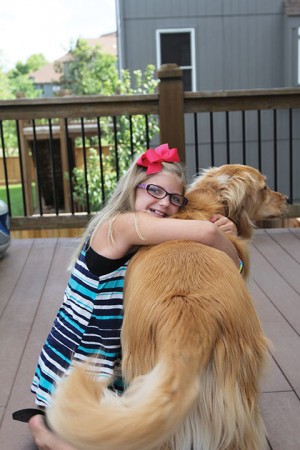 Zoe doesn’t let her hearing or vision loss slow her down. At home, Zoe likes to ride her bike, visit her friends and play school and restaurant in her basement; she even has a name for her restaurant: “Zoe Peppers.” Even when put in an unfamiliar setting, she shows no fear in tackling new challenges and activities.
Zoe doesn’t let her hearing or vision loss slow her down. At home, Zoe likes to ride her bike, visit her friends and play school and restaurant in her basement; she even has a name for her restaurant: “Zoe Peppers.” Even when put in an unfamiliar setting, she shows no fear in tackling new challenges and activities.
“She is not afraid to try things,” Zoe’s mother, Katie Murrow, said. ”She was at the lake this last week, and she skiid, she wakeboarded, tubed, knee-boarded. She may not be able to see the boat in front of her, but she knows all the signs for what she wants to do. She doesn’t let that hold her back.”
Zoe is also learning to play the piano. It is easier for her to read white text on a dark background, so her parents said they would like to get her some specially printed sheet music for her to pursue that passion.
“Well since I want to be famous when I grow up, I like music … and I like to be teaching, I could be a famous music teacher,” Zoe said.
While it is possible that a person with RP can go completely blind, there are several treatment options that have been released or are in the making. Some of these options include placing a camera on the retina to capture more light, and the image is relayed to the brain.
However, Zoe is a younger patient. Therefore, doctors are trying to locate the genetic mutation and cure the
disease, rather than only slowing it down.
“There are a few hundred known genes that cause RP,” Zoe’s father, Wayne Murrow, said. “They were able to test her against those and she didn’t match any of them. So they have to dive deeper to figure out what gene it is, and once they figure that out they can figure out what the missing protein is, and they can possibly do some kind of therapy.”
Besides gene therapy, there are other treatments being developed that could provide a more permanent solution.
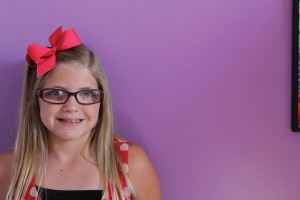 “They took a skin graft from her arm, and what they are going to do is form stem cells from her skin cells and then turn those into retina cells,” Wayne said. “Hopefully one day they can implant into her retinae to help regenerate some of the cells that she’s losing and restore the vision that way.”
“They took a skin graft from her arm, and what they are going to do is form stem cells from her skin cells and then turn those into retina cells,” Wayne said. “Hopefully one day they can implant into her retinae to help regenerate some of the cells that she’s losing and restore the vision that way.”
Even though she is only 10 years old, Zoe is actively spreading awareness about RP within the community. She presents to her school, Morse Elementary, every year.
“What we have seen with kids in her class, is that people don’t know how to treat her and the best thing to do is try to be nice to her,” Katie said. “Like, when you see a kid who is in a wheelchair, and you stare … that is something we are trying to keep away from her, because eventually she will walk through the school with a cane. She doesn’t do it very much now, because kids can look differently at her, and she knows that, but eventually that is something she is going to have to do. Her message should be, ‘It’s ok to ask me questions.’ She wants to share her story.”
In addition to spreading awareness at school, Zoe has also been the Youth Chair for the Kansas City VisionWalk for the past three years.
The Kansas City VisionWalk began in 2008, while the first VisionWalk in the country was held in 2006. It is held every summer. The 5K walk lasts several hours, with food, bouncy houses and other activities available, hosting events for walkers of all ages.
The Murrows have had a team for the VisionWalk since 2012, which has grown in size considerably. When it first began, Team Zoe had 12 walkers. However, this year, the team had a personal record number of 115 members, winning the award for the largest team at the 2015 walk.
The VisionWalk is partners with The Foundation Fighting Blindness, which handles funding research with the money generated. This benefits many people affected by eye diseases, including those affected by RP.
“I think the important thing to remember too, then is that there are over 10 million Americans that are affected by blinding retinal diseases,” Katie said. “It doesn’t just have to be Retinitis Pigmentosa, there’s glaucoma, and as people get older, their vision can deteriorate for multiple reasons.”
A majority of the proceeds, 98 percent, go directly to the researchers who are studying eye diseases. The Murrows said they appreciate this strong connection with researchers, compared to the percentage of proceeds given from other similar events.
“A lot of other places where they have these walks or runs where they are raising donations, you see a lot of that money going elsewhere besides research,” Wayne said. With [the Kansas City VisionWalk], a lot of it goes straight to the doctors.”
Wayne can see this effort to fund research paying off in the near future.
“Right now I think we are so close [to finding the cure] that the people who are a part of this right now will be here someday and there will be a cure for what she has,” Wayne said. “I think that’s pretty exciting. You will be able to see a finalization for this someday.”
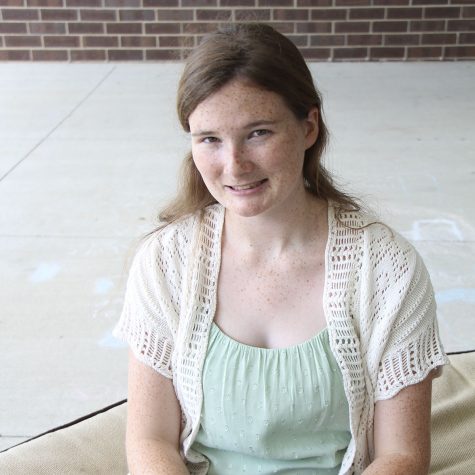
Lillie Hoffart is a senior and has been on staff since her freshman year. She enjoys writing and designing for the paper and is the managing editor....


